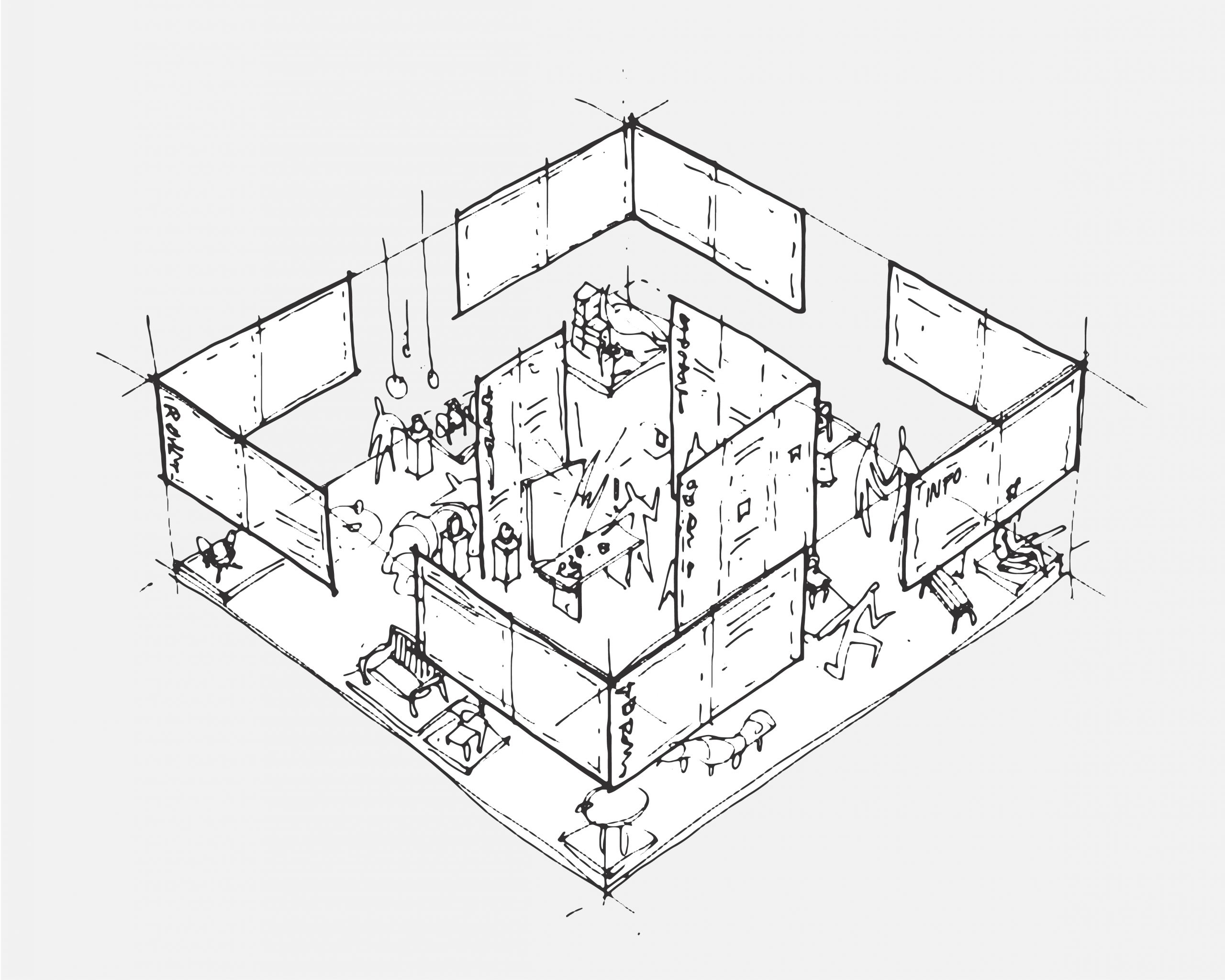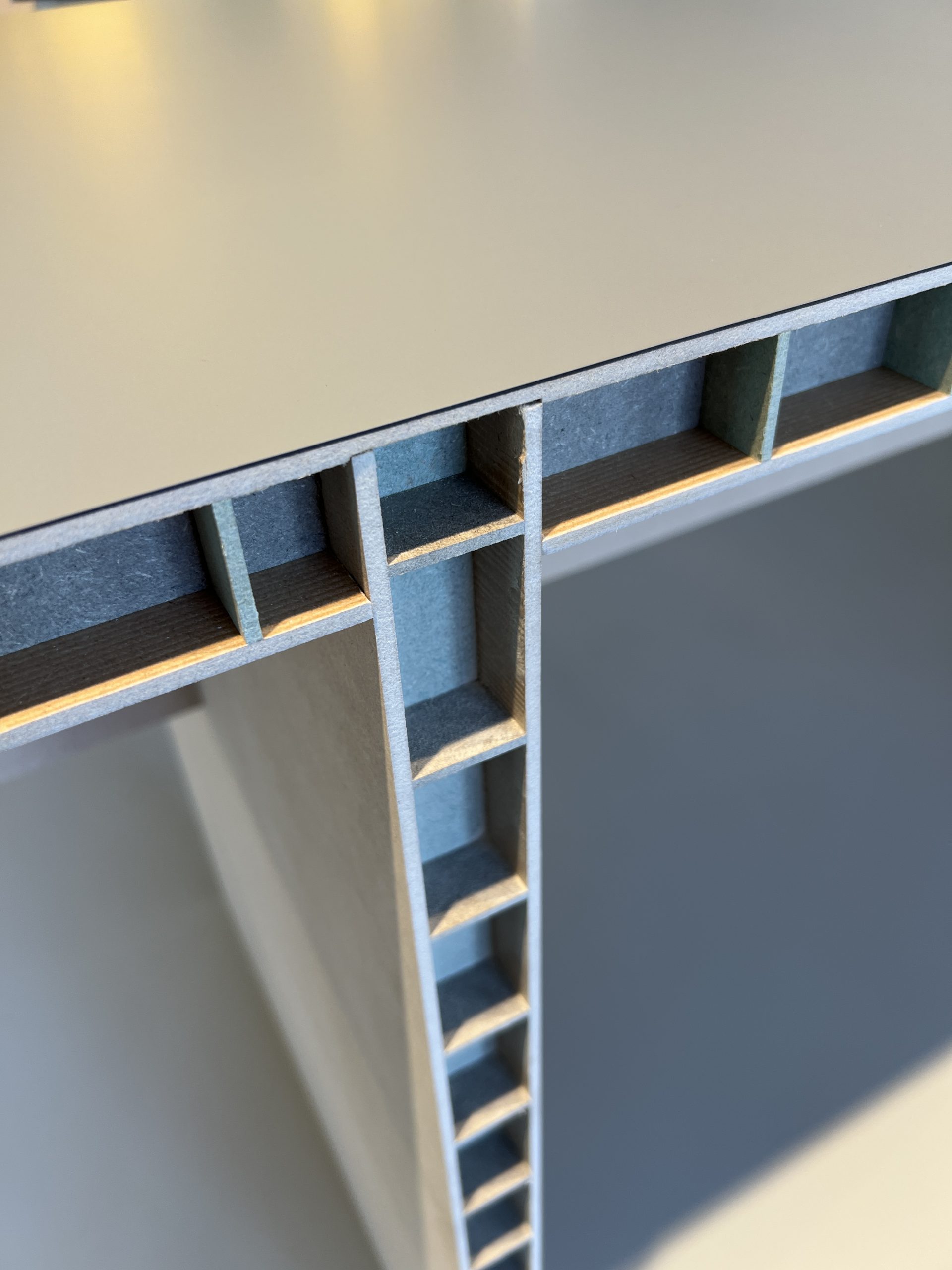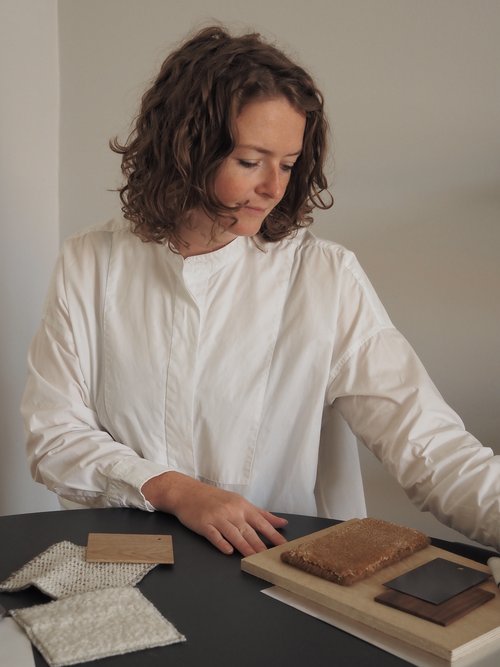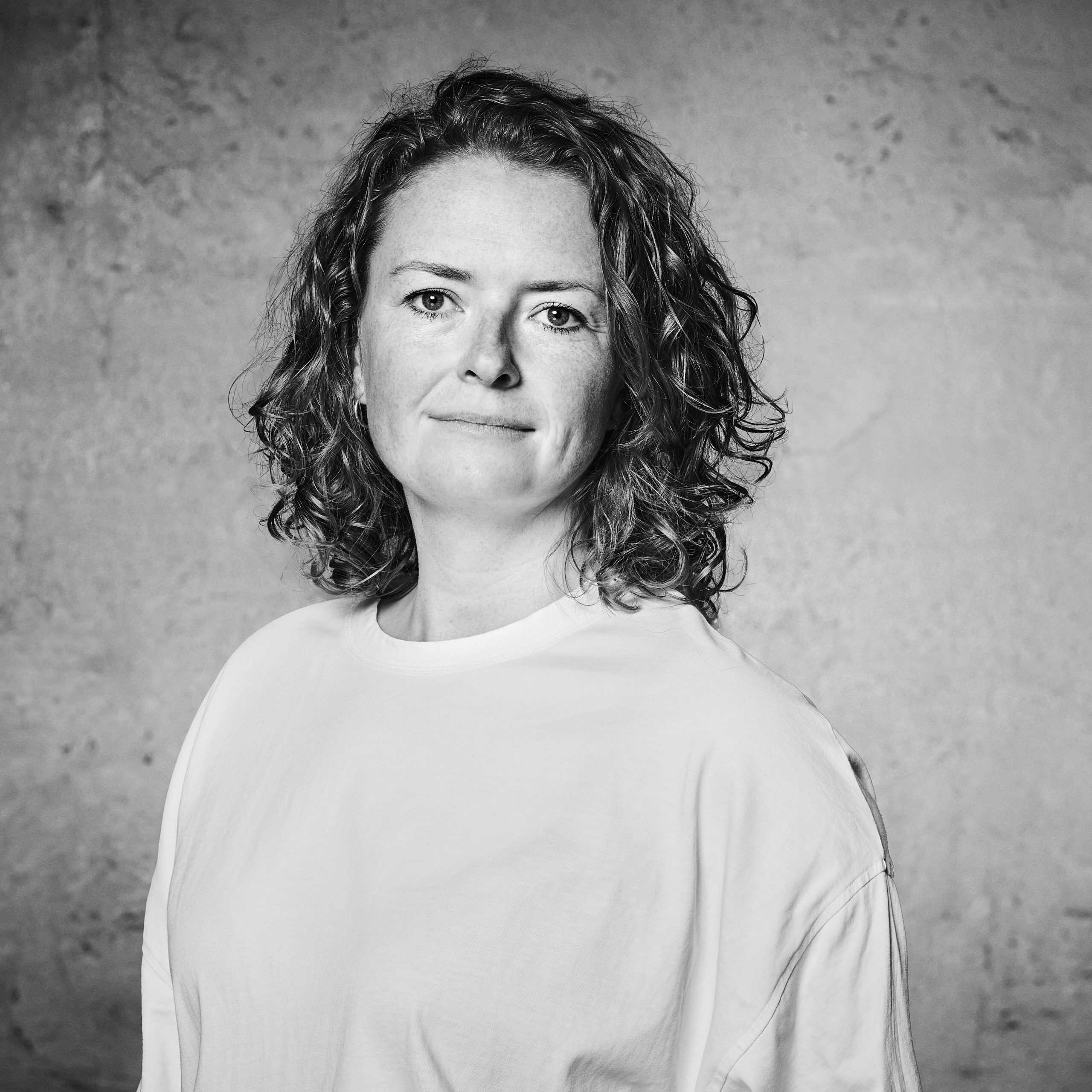Karen Toft, spatial designer
Karen is an interior architect and spatial designer, and she has designed the exhibition stand for Danish Design Makers’ and Målbar’s participation at this year’s ORGATEC fair in Cologne October 22nd-25th.
Low footprint, high impact
Like the 19 designs created by the 19 participating designers, Målbar also calculate the climate footprint of the exhibition stand. And Karen works with several initiatives to keep the climate footprint low while still ensuring that the stand will have a high impact on the fair. She wants to create a wauw-effect, and for the stand to project seriousness and high professionalism.
“I wish to create a calm environment in the exhibition, where people can explore. We have 19 designers and design duos exhibiting their design, and we have Målbar who also has an important role on the stand. Then we have the Blind Date concept and the overall theme of reduction that we want to communicate about as well. So, we have a lot to communicate on our exhibition stand” she says.
Karen emphasizes the importance to avoid creating a hierarchy and promoting comparison between the designs.
“DDM likes to exhibit together, but they are still individuals who want the best for their own design. Therefore, I want to avoid placing similar products close to each other”.

Minimizing the emissions of an exhibition stand
First of all, Karen has created a room that signals openness and easy access from all four fronts. Still, she wants to create the feeling of intimacy and demarcation of the designs, so they each have their own space.
The big banners are made from deadstock textile materials. This has been a conscious choice from Karen’s side. According to PEF, deadstock textiles do not have a lower climate emission than regular supplied textiles, because they have been produced the same way. But Karen believes that it makes a positive difference and tells a good story to use materials, that otherwise would have ended up as trash.
Paper could have been a lower emitting alternative to textiles, but Karen underlines that paper is less durable and they want to reuse the banners. Furthermore, she thinks textile more than paper gives the stand the serious expression that she’s opting for to reflect the sincerity of the displayed designs. That is why she chose textile over paper.
She has also made the choice not to have the edges of the banners sown but instead they are being cold cut. This means fewer processes and leaves the banners with no backside as sowing would. Furthermore, she has made the banner multi-functional to get the most out of the impactful material. The banners function as both effects, information, and demarcation.
Besides from the textile banners, Karen primarily works with loose elements for the presentation.
“Traditionally, there has been a tendency to build large walls, and floors for exhibitions. I want to break with this tendency by working with independent elements so that they more easily can be reused in new showcases and exhibitions. I also want them as raw as possible to save the surface treatment. This gives the opportunity to change the visuals of the elements for another set-up or for the material to enter recycling.”
So, instead of building podiums made of MDF boards, which is the normal way, Karen have chosen to use boards build on the honeycomb principle. This method results in boards that are lightweight, strong and durable and significantly reduces the amount of material used.
“The specific boards that we use are produced in Holland, but instead of having them sent to Denmark for processing, we’ll have them sent directly to the fair, and we will simply cut them into the desired measurements on spot. To minimize the waste generated, I have designed the different pieces that we need for the podiums in sizes that consider the standard measurements of the boards. I have also designed the different pieces so that the podiums can be assembled without the use of glue or screws.”

Compromises on both sides
However, Karen sometimes feels like she must compromise. Low resource use sometimes clashes with the wish to be visible and voluminous at the fair. Her compromises go both ways. Karen has for example completely discarded the idea of having a floor on the stand. Since she couldn’t borrow or rent something at the fair, she decided that the environmental impact and costs of a floor was too high compared to the advantages. She has also made a compromise in choosing textile over paper and here she has prioritized the aesthetics. On the other hand, choosing deadstock textiles over regular supply, limits her choices because there are less colors and materials to choose from. This is another compromise in favor of the reduction theme.
“I am careful not to make the stand too reduced or too simple, because it might make the stand look schoolish. Our designers are established and have worked with design for many years, so we want to make sure that we are not misjudged as a school project. Therefore, I work hard to create that wauw-effect”.
Karen’s hope and experience are that the more serious and professional the exhibition appears, the better the chance of a successful fair for the designers as well as the blind date project.
After life of the exhibition elements
In general, Karen thinks a lot about what will and can happen with the stand after the fair. And even though she does not know for sure, she ensures that the different elements can be used again and for many different purposes.
“Either the designers get to take the podiums home to use as they please, or maybe we need the whole set-up for another fair. Maybe we give some of the elements to other organizations that can use them. But before this, the whole exhibition might be displayed at another fair next year.”
All the podiums and tables can be easily disassembled and flat-packed for their further journey. The banners can be taken down and rolled into rolls, that take up only a little space in the transport. The stone elements will be returned close to the fair. The designers will bring home their prototypes. And that’s it.
The spatial designer about the screening tool
“I mostly design spaces and furnish offices. The Målbar tool in its current form is a bit too complex for me to implement in my daily work. But I really like what the tool can do. It is interesting to be able look up the emissions of different materials and processes, and especially to see the difference between two materials that you thought were more or less the same. “ Karen says.
Karen has had the tool in mind throughout her design process. It has acted as a reminder for her to keep reducing and always try to choose the best materials for the purpose.
Karen believes that our aesthetic sense will change. That the perception of quality will change when we know why things look like they do. But also, that humans forever want to renew themselves and their surroundings. So, we must practice new ways of changing the appearance of our furniture so that we can make it look new and different, without using a lot of resources.

Context
Målbar participates in Danish Design Makers’ 2024 design challenge, The Blind Date experiment where 19 designers and design duos answer furniture briefs from anonymous European furniture companies. The designers use Målbar’s climate screening tool to gain insigths into the climate emissions of materials and production processes, learning about the climate impact of their design choices. Ultimately, the total climate footprint of each design will be calculated and presented at ORGATEC in Cologne on October 22nd-25th 2024.
This article reflects the designer’s own opinion and Målbar does not necessarily agree with their statements about materials, processes, etc.
